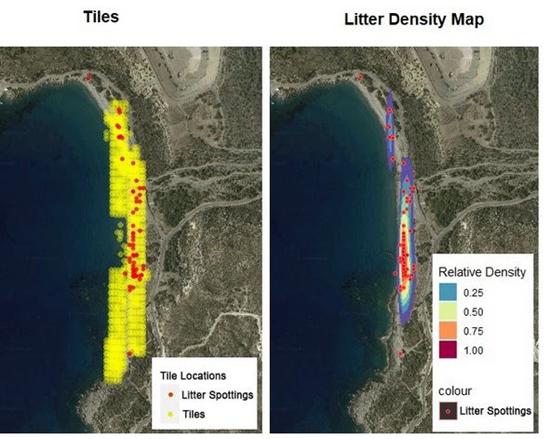Collaboration with the IIASA team for marine litter tile sorting
The team has performed extensive surveys on coastal environments in Greece, gathering valuable information about marine plastic pollution using drones. This information needs to be further classified based on the presence and quantity of litter.
However, due to the sheer amount of data collected by the drones, new and innovative approaches are needed for transforming the images into a training data set suitable for ML algorithms. Crowdsourcing solutions can be used to classify these data sets in a very rapid way and hence provide calibration and validation data sets, e.g., to test ML algorithms. At the same time, they can help to raise awareness of the marine debris litter problem and thereby help to mitigate the problem directly. The use of Picture Pile, developed at IIASA, serves perfectly this purpose as it combines a crowdsourcing model with rapid image classification. This application has already been used for rapid image assessment to map cropland, deforestation, the presence of night-time lights, poverty, damage to buildings after a hurricane, and cloud cover on optical imagery. The application can ingest any imagery including that from drones.


The data sets will be formatted to be compatible with the Picture Pile application. To help users classify the images faster and more accurately, each image will be split into smaller tiles with 1024×1024 pixels. The task of the users will be to examine each tile to determine whether they can see visible evidence of plastic litter. The tiles will be geolocated, and after sorting through the pile of pictures, a large data set will be available for use with ML algorithms for the development of an automated application for marine plastic litter detection.





